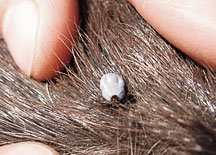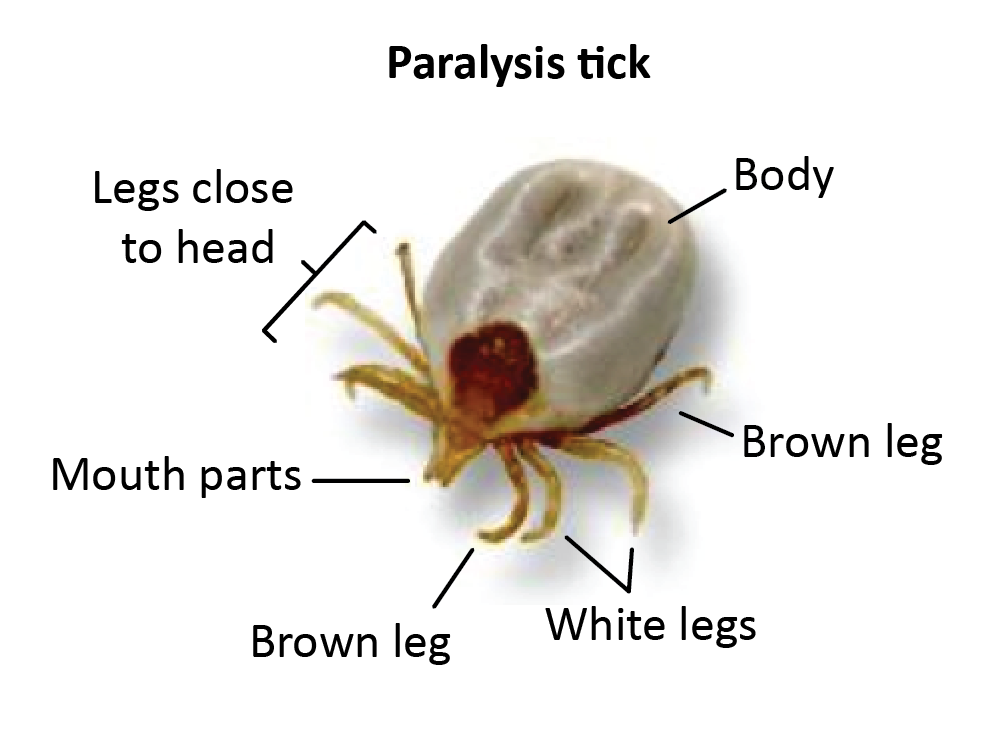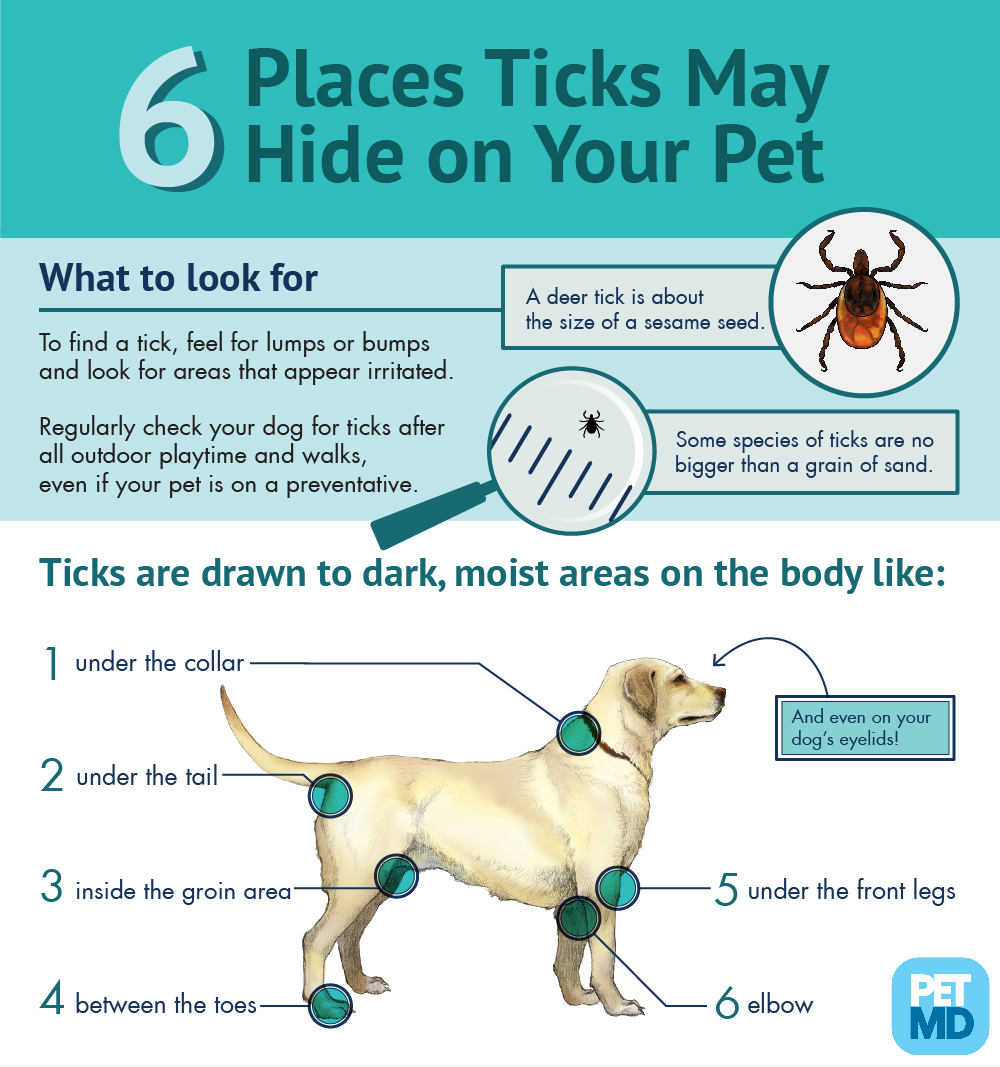With over 70 tick cases and almost 20 snake cases treated at our Booval Vet Hospital in the past two months, it’s time for another reminder about the importance of tick prevention!
This season, we have had the largest amount of snake and tick cases through our doors and it has been one of the worst season we have ever seen. This influx is likely due to the mild winter, and the dry warm weather. If your pet is not yet on tick prevention, it’s a tick(ing) time bomb!


Tick paralysis is a potentially devastating condition that can affect dogs and cats and is caused by a parasite, the Paralysis Tick (Ixodes Holocyclus).
The paralysis tick is usually found in a 20-kilometre wide band following the eastern coastline of Australia. The Paralysis Tick is most common in moist, humid coastal areas with abundant native animals that serve as hosts for the tick. Long grasses and bushland provide ideal environments for ticks, and if you live close to these areas, you and your pets are at risk.
Ticks are most prevalent from Spring to Autumn however can occur at any time of year.
Paralysis Ticks are not particularly mobile, and rely on passing animals for a blood meal. The Paralysis Tick will crawl up the stems of grasses or along branches and ‘perch’ ready to latch on to a passing animal. Paralysis ticks will jump onto dogs and cats and then attach by burrowing their mouth-parts into the skin. They can attach anywhere even in the ears on the lips or around the anus. However, they usually attach on the front half of the dog or cat. Dogs and cats can have multiple ticks attached at once. Occasionally numerous tiny juvenile ticks can attach and cause a problem.
So Why Are These Little Creatures So Dangerous To Our Pets?
After attaching, the tick feeds on the host’s blood, injecting small amounts of saliva into the dog or cat in the process. The tick’s saliva contains a toxin that causes the connection between the nerves and the muscles throughout the body in the dog or cat to become disrupted. This causes weakness and ultimately paralysis.
This is not just limited to the muscles involved in standing and walking, but also those inside such as those involved breathing and in swallowing, potentially causing serious compromise to breathing and pneumonia.
How Long Does It Take For A Tick To Cause A Problem?
Tick paralysis symptoms will vary depending on the life stage and size of the paralysis tick, but usually signs and symptoms will appear after about 4 days of being attached. However there can be marked variation in the potency of the tick and also the individual dog or cat’s susceptibility to tick paralysis, which may also vary from season to season.

Common Signs Of Tick Paralysis
- Uncoordination
- Weakness
- Collapse
- Vomiting or retching
- Change of bark or meow
- Difficulty breathing
Because the tick toxin also causes weakness and dilation to the food pipe, affected dogs and cats may retch and regurgitate their food, water or just frothy fluid. One serious complication of this is aspiration of fluid or food into the lungs which causes pneumonia.
Affected dogs and cats also may have difficulty swallowing which can cause fluid to build up in the mouth and throat which can make them choke. Tick paralysis also often causes difficulty breathing. If the paralysis becomes too advanced and the muscles involved with breathing become too weak, the dog or cat may not be able to breath sufficiently or at all.
Tick paralysis is progressive and potentially fatal and you should seek Veterinary treatment immediately.

What Does A Tick Look Like?
Paralysis ticks can be identified by their grey body and legs close to the head. Their legs are the feature which best distinguishes them from other ticks that occur in the same regions. Paralysis ticks have one pair of brown legs closest to their head, then two pairs of white legs and then one pair of brown legs closest to the body.

How Can I Prevent Tick Paralysis
Tick prevention is easily obtainable from any of our three Vet clinics and is a must during this time of year. There are products for both cats and dogs, we recommend Bravecto for cats and Nexgard for dogs. It is also important to remember that no product is 100% effective and thorough tick searches daily should be undertaken on your pets. Clipping your dog or cat’s coat short, especially during the tick season, makes performing tick searches much easier.
It is vital to use tick prevention products exactly as directed and most importantly, do not to use any products designed for dogs on cats as these can be extremely toxic to cats.
How To Perform A Tick Search
To perform a tick search, work your fingers through your dog or cat’s coat down to the skin and then systematically massage your fingers over the entire coat. You should concentrate on the dog or cat’s front half, especially around the neck as this is where they are more likely to occur. Attached ticks are firmly attached and feel like a hard smooth round irregularity on the surface of the skin. Make sure you check the edge of the lips, in skin folds, between the toes and in the ears.
If you think that you have found a tick, part the fur to have a closer look at it. Nipples, warts and other bumps on the skin are often mistaken for ticks and you should not attempt to remove them. Sometimes the tick has already become detached by the time that you are performing a search in which case you may only find a crater where a tick has been attached.

My Pet Has A Tick, What Should I Do Now?
If you have found a tick, you should use a tick remover to detach it from the skin. You should not apply tick treatments, alcohol, mineral oil or petroleum jelly to the tick. Even once a paralysis tick has been removed it is possible for a dog or cat that was previously unaffected to start to show signs of tick paralysis. Also dogs and cats that are showing signs of paralysis can deteriorate further even after the tick has been removed.
If you suspect that your dog or cat has tick paralysis you can reduce the risk of complications by withholding food and water before you can see a veterinarian. This is especially important if the dog or cat is regurgitating.
If your pet is showing any signs of tick paralysis, you should take him/her to a Veterinarian for treatment promptly.







